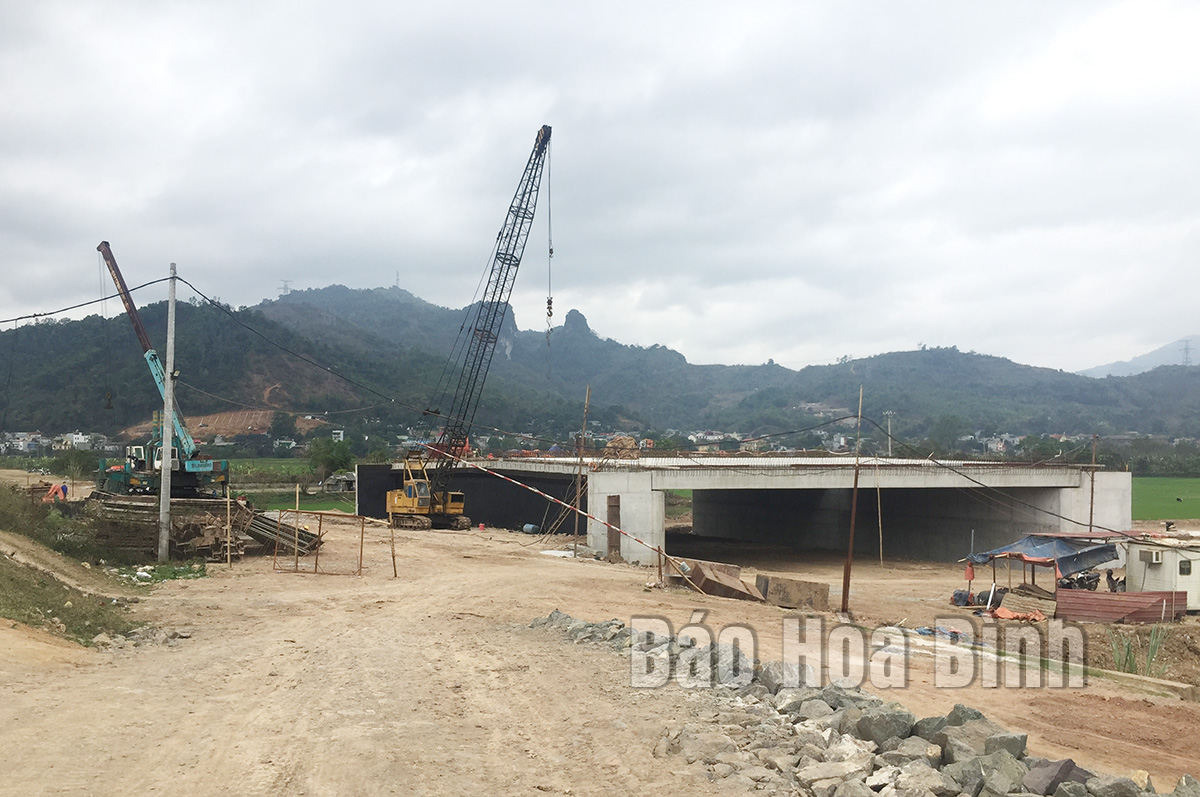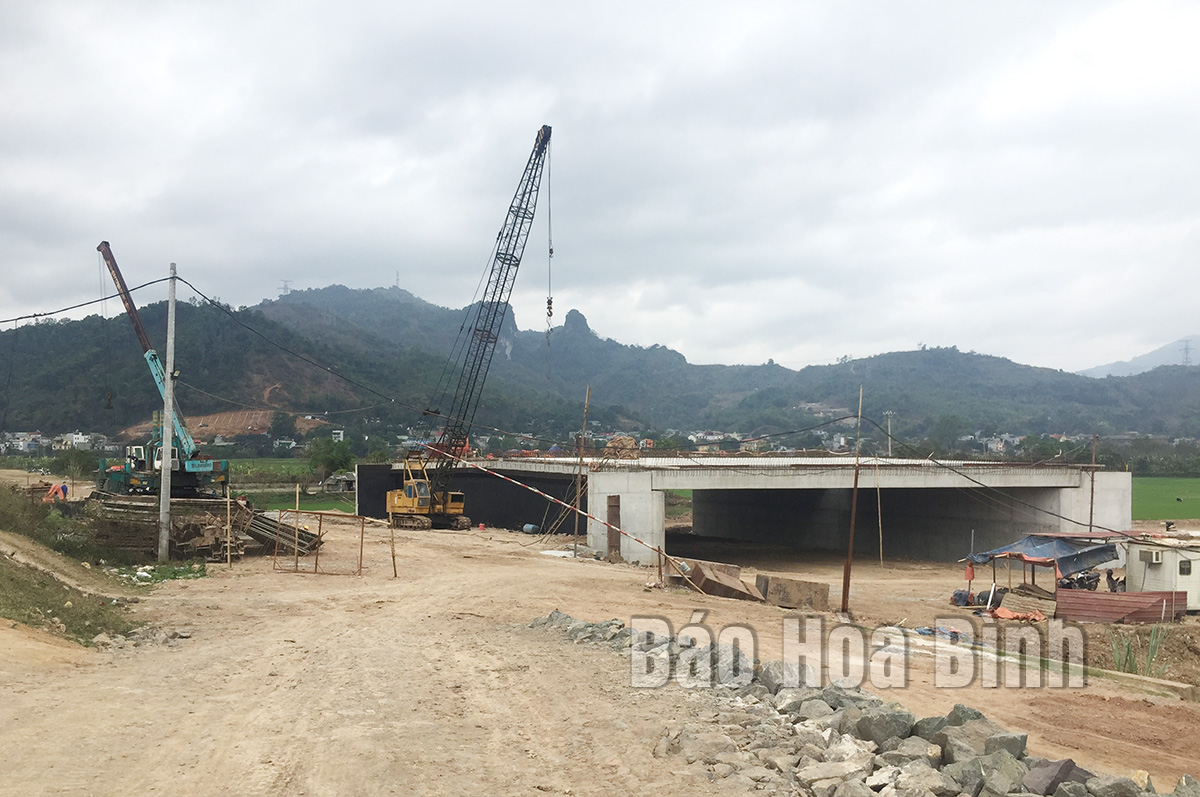
(HBO) - Considering the development of the transport infrastructure as one of the strategic breakthroughs to promote the province's socio-economic development, on the first days of 2023, the People's Committee of Hoa Binh directed departments, sectors and investors to quickly carry out solutions to speed up the construction on key traffic works and projects.

Several bridges
and drainages on road connecting Tran Hung Dao street to Dan Chu ward with
National Highway 6 in Hoa Binh city built.
Currently, there are six key transport infrastructure
projects using public investment which are being urgently implemented by the
province.
For the road project connecting Tran Hung Dao street to Dan
Chu ward to National Highway 6 and the other to upgrade Provincial Road 436, Le
Ngoc Quan, Deputy Director of the provincial Department of Transport, said that
the site clearance is a bottleneck, as it needs a resettlement plan for 80
affected households. Tan Lac district has completed procedures to apply for the
investment proposal in a project to build a resettlement area. Meanwhile in
Phuong Lam ward (Hoa Binh city), the arrangement of a resettlement area has yet
to come into an end.
For the Hoa Binh - Moc Chau expressway project, and a road
linking the Hoa Binh - Hanoi region to Son La Expressway (Hoa Binh - Moc Chau),
the provincial People's Committee has requested the drastic implementation of
procedures related to compensation, site clearance and resettlement. Tran Tuan
Son, Vice Chairman of Kim Boi district People's Committee, said that the
district has made a compensation and site clearance plan for affected
households, and compensated households whose graves have to be relocated.
According to a leader of the provincial traffic construction
investment project management board, the regional linkage road passes through a
large area of rice fields and production forests in three districts and Hoa
Binh city. Therefore, the provincial People's Committee will soon give
directions on the forest planning to change the use of the forests affected by
the project to other purposes and report to the Ministry of Natural Resources
and Environment to submit to the Government for approval./.
According to data from the Hoa Binh Provincial Party Committee, the industrial production index for the first six months of 2025 is estimated to have increased by 20% compared to the same period last year. This marks the highest year-on-year growth rate for this period since 2020.
In the first six months of 2025, Hoa Binh province’s export turnover was estimated at 1.145 billion USD, marking an 18.11% increase compared to the same period in 2024. Import turnover was estimated at $ 804 million, a 17.15% increase, which helped the province maintain a positive trade balance.
The lives of the ethnic minority farmers in Tan Lac district have gradually improved thanks to the new directions in agricultural production. This is a testament to the collective strength fostered through the professional associations and groups implemented by various levels of the district’s Farmers’ Union.
With the motto the "product quality comes first,” after nearly one year of establishment and operation, Muong village’s Clean Food Agricultural and Commercial Cooperative, located in Cau Hamlet, Hung Son Commune (Kim Boi district), has launched reputable, high-quality agricultural products to the market that are well-received by consumers. The products such as Muong village’s pork sausage, salt-cured chicken, and salt-cured pork hocks have gradually carved out a place in the market and they are on the path to obtaining the OCOP certification.
In the past, the phrase "bumper harvest, rock-bottom prices" was a familiar refrain for Vietnamese farmers engaged in fragmented, small-scale agriculture. But today, a new spirit is emerging across rural areas of Hoa Binh province - one of collaboration, organisation, and collective economic models that provide a stable foundation for production.
Maintaining growing area codes and packing facility codes in accordance with regulations is a mandatory requirement for agricultural products to be eligible for export. Recently, the Department of Agriculture and Environment of Hoa Binh province has intensified technical supervision of designated farming areas and packing facilities to safeguard the "green passport" that enables its products to access international markets.



